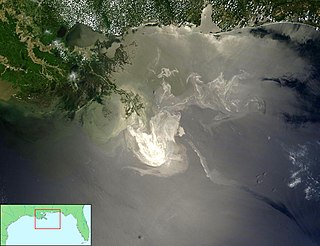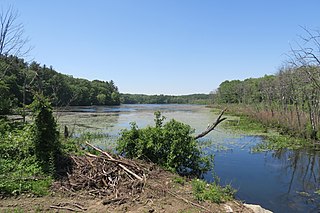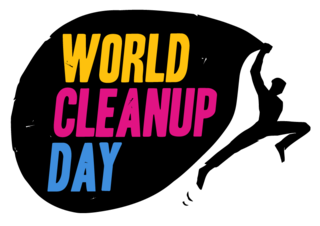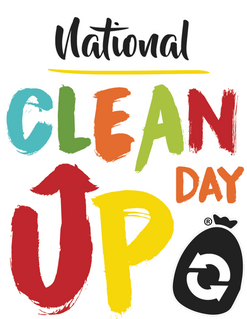
In urban planning, brownfield land is any previously developed land that is not currently in use. It may be potentially contaminated, but it is not required to refer for area as brownfield. The term is also used to describe land previously used for industrial or commercial purposes with known or suspected pollution including soil contamination due to hazardous waste.

Superfund is a United States federal environmental remediation program established by the Comprehensive Environmental Response, Compensation, and Liability Act of 1980 (CERCLA). The program is administered by the Environmental Protection Agency (EPA). The program is designed to investigate and clean up sites contaminated with hazardous substances. Sites managed under this program are referred to as "Superfund" sites. There are 40,000 federal Superfund sites across the country, and approximately 1,300 of those sites have been listed on the National Priorities List (NPL). Sites on the NPL are considered the most highly contaminated and undergo longer-term remedial investigation and remedial action (cleanups).

Asarco LLC is a mining, smelting, and refining company based in Tucson, Arizona, which mines and processes primarily copper. The company has been a subsidiary of Grupo México since 1999.

The Hunters Point Naval Shipyard was a United States Navy shipyard in San Francisco, California, located on 638 acres (258 ha) of waterfront at Hunters Point in the southeast corner of the city.

Litter consists of waste products that have been discarded incorrectly, without consent, at an unsuitable location. Litter can also be used as a verb; to litter means to drop and leave objects, often man-made, such as aluminum cans, paper cups, food wrappers, cardboard boxes or plastic bottles on the ground, and leave them there indefinitely or for other people to dispose of as opposed to disposing of them correctly.
Carl Garner Federal Lands Cleanup Day is a day observed in the United States to encourage nationwide citizen participation in the cleanup of federal lands. It occurs on the first Saturday after Labor Day, and may include a variety of programs, ceremonies, and activities. It was created in 1985 by the Federal Lands Cleanup Act as the "Federal Lands National Cleanup Day" and renamed in 1995 to honor Carl Garner and continue and expand his work of encouraging citizens to clean up Greers Ferry Lake and Little Red River in Arkansas.

The Sydney Tar Ponds were a hazardous waste site on Cape Breton Island in Nova Scotia, Canada.

The Santa Susana Field Laboratory (SSFL), formerly known as Rocketdyne, is a complex of industrial research and development facilities located on a 2,668-acre (1,080 ha) portion of Southern California in an unincorporated area of Ventura County in the Simi Hills between Simi Valley and Los Angeles. The site is located approximately 18 miles (29 km) northwest of Hollywood and approximately 30 miles (48 km) northwest of Downtown Los Angeles. Sage Ranch Park is adjacent on part of the northern boundary and the community of Bell Canyon is along the entire southern boundary.

Osborne Reef is an artificial reef off the coast of Fort Lauderdale, Florida. Originally constructed of concrete jacks, it was the subject of an ambitious expansion project utilizing old and discarded tires. The expansion ultimately failed, and the reef has come to be considered an environmental disaster—ultimately doing more harm than good in the coastal Florida waters.
The Greenpoint oil spill is one of the largest oil spills ever recorded in the United States. Located around Newtown Creek in the Greenpoint neighborhood of Brooklyn, New York City, between 17 and 30 million US gallons of oil and petroleum products have leaked into the soil from crude oil processing facilities over a period of several decades. The spill was first noticed in 1978, and soil vapor tests were still reported as returning positive in 2008.

The Kin-Buc Landfill is a 220-acre (0.89 km2) Superfund site located in Edison, New Jersey where 70 million US gallons (260,000 m3) of liquid toxic waste and 1 million tons of solid waste were dumped. It was active from the late 1940s to 1976. It was ordered closed in 1977. Cleanup operations have been underway to address environmental issues with contamination from 1980s through to 2000s. This site was one of the largest superfund sites in New Jersey having taken in around 90 million US gallons (340,000 m3). The site is heavily contaminated with PCBs, which leaked into Edmonds Creek, a tributary of the Raritan River.
The Union Pacific Railroad Omaha Shops Facility was a 100-acre (0.40 km2) shop for the trains of the Union Pacific located at North 9th and Webster in Downtown Omaha. With the first locomotives arriving in 1865, it took until the 1950s for the facility to become the major overhaul and maintenance facility for the railroad. This lasted until 1988 when UP moved most of the operations out-of-state. Demolition began soon afterwards.

The Office of Enforcement and Compliance Assurance (OECA) is the law enforcement arm of the United States Environmental Protection Agency (EPA). It is made up of attorneys, special agents, scientists and other employees.

The Deepwater Horizon oil spill was an industrial disaster that began on 20 April 2010 off of the coast of the United States in the Gulf of Mexico on the BP-operated Macondo Prospect, considered to be the largest marine oil spill in the history of the petroleum industry and estimated to be 8 to 31 percent larger in volume than the previous largest, the Ixtoc I oil spill, also in the Gulf of Mexico. The United States federal government estimated the total discharge at 4,900 Mbbl. After several failed efforts to contain the flow, the well was declared sealed on 19 September 2010. Reports in early 2012 indicated that the well site was still leaking. The Deepwater Horizon oil spill is regarded as one of the largest environmental disasters in world history.

The Kalamazoo River oil spill occurred in July 2010 when a pipeline operated by Enbridge burst and flowed into Talmadge Creek, a tributary of the Kalamazoo River. A 6-foot (1.8 m) break in the pipeline resulted in one of the largest inland oil spills in U.S. history. The pipeline carries diluted bitumen (dilbit), a heavy crude oil from Canada's Athabasca oil sands to the United States. Cleanup took five years. Following the spill, the volatile hydrocarbon diluents evaporated, leaving the heavier bitumen to sink in the water column. Thirty-five miles (56 km) of the Kalamazoo River were closed for clean-up until June 2012, when portions of the river were re-opened. On March 14, 2013, the Environmental Protection Agency (EPA) ordered Enbridge to return to dredge portions of the river to remove submerged oil and oil-contaminated sediment.

Hocomonco Pond is a recreational pond located in Westborough, Massachusetts near Route 9. Also called Hobomoc Pond, it was named for Hobomok, a Wamesit Indian evil spirit. The pond and adjacent land are a Superfund site.

Between 1947 and 1977, General Electric polluted the Hudson River by discharging polychlorinated biphenyls (PCBs) causing a range of harmful effects to wildlife and people who eat fish from the river. Other kinds of pollution, including mercury contamination and cities discharging untreated sewage, have also caused problems in the river.

World Cleanup Day is an annual global social action program aimed at combating the global solid waste problem, including the problem of marine debris. It is coordinated by the global organization Let's Do It! World, the headquarters is located in Tallinn, Estonia. The next World Cleanup Day is 16 September 2023.

National CleanUp Day is held annually in the United States and globally on the third Saturday of September. In the United States, there are cleanups held in every State and Territory. It promotes country-scale organized and individual cleanup events and volunteering to keep the outdoors clean and prevent plastic from entering the ocean. National CleanUp Day is organized by Clean Trails, a nonprofit organization founded by Bill Willoughby and Steve Jewett.

A cleanup is a form of environmental volunteering where a group of people get together to pick-up and dispose of litter in a designated location. Cleanups can take place on a street, in a neighborhood, at a park, on a water stream, or other public spaces. Cleanup events are often volunteer run. The cleanup volunteers make sure the waste picked-up is disposed of in its appropriate place. Cleanup events are often community-centered and led. During the COVID 19 pandemic litter picking participation has greatly increased in the UK. There are a vast range of reasons that people take part in litter picking activities. These include: clearing up unsightly areas; protecting wildlife; keeping people safe, connecting with nature, finding valuables, being part of a community, mental & physical health benefits and acting to protect the environment.
















